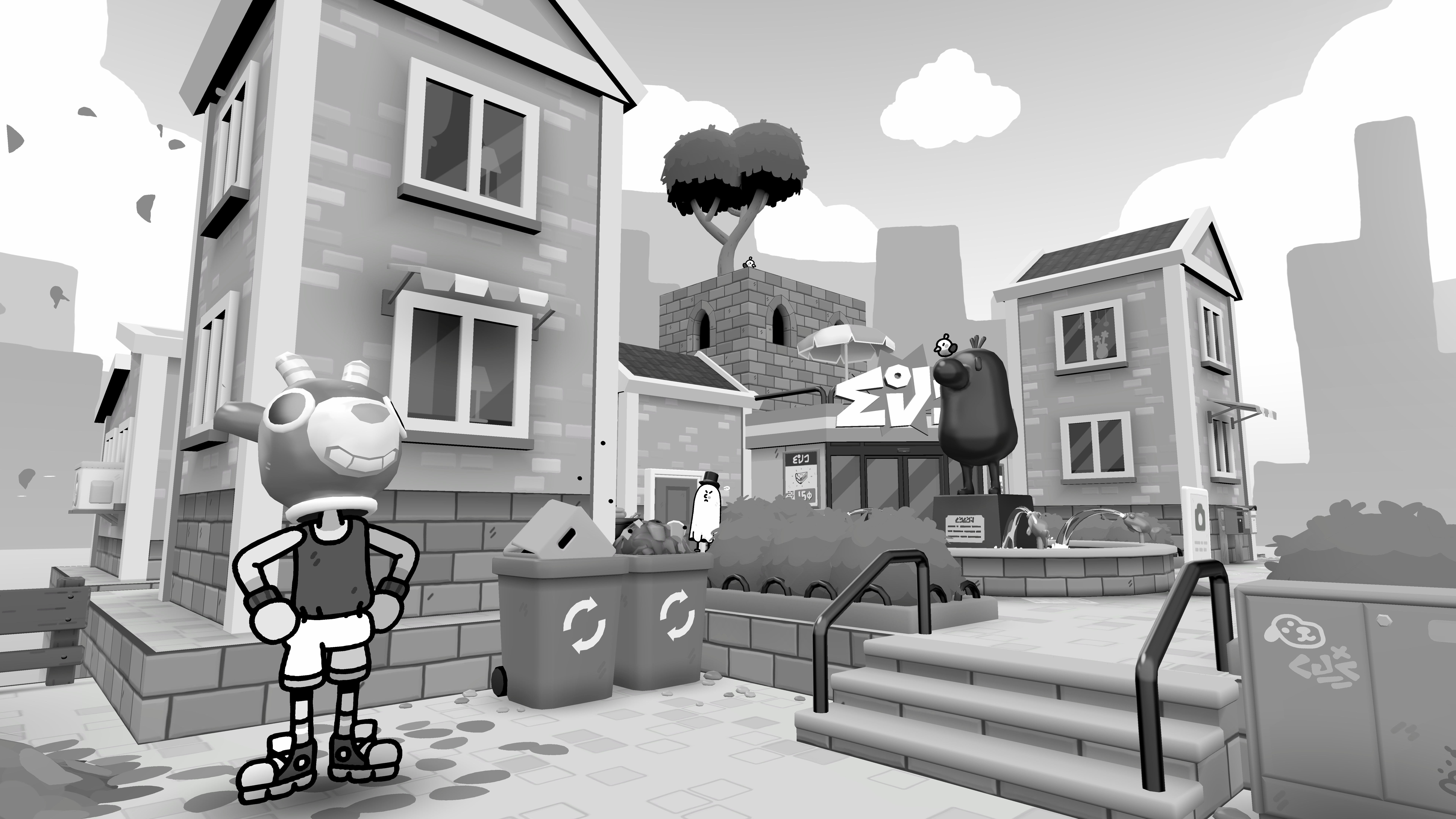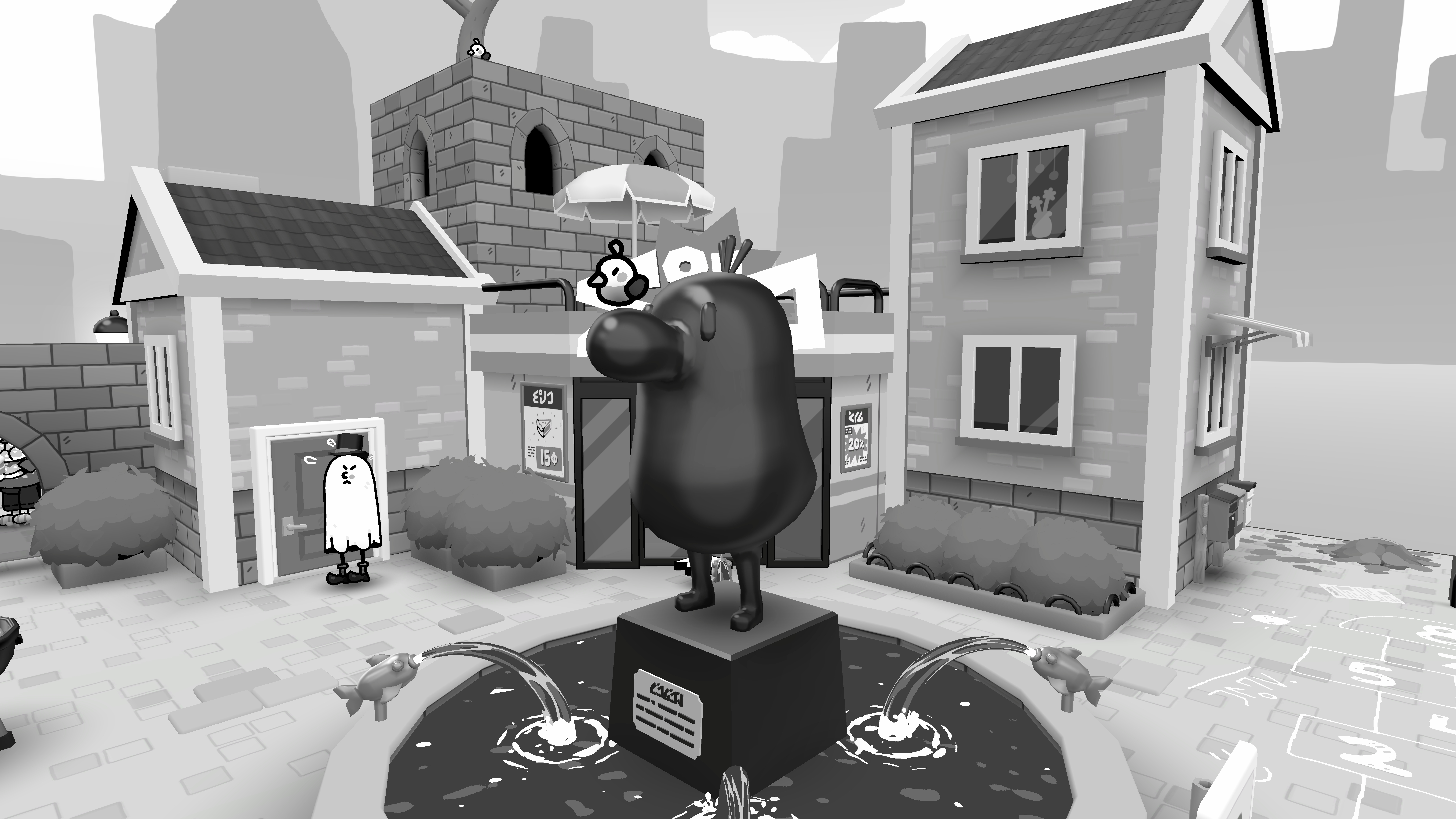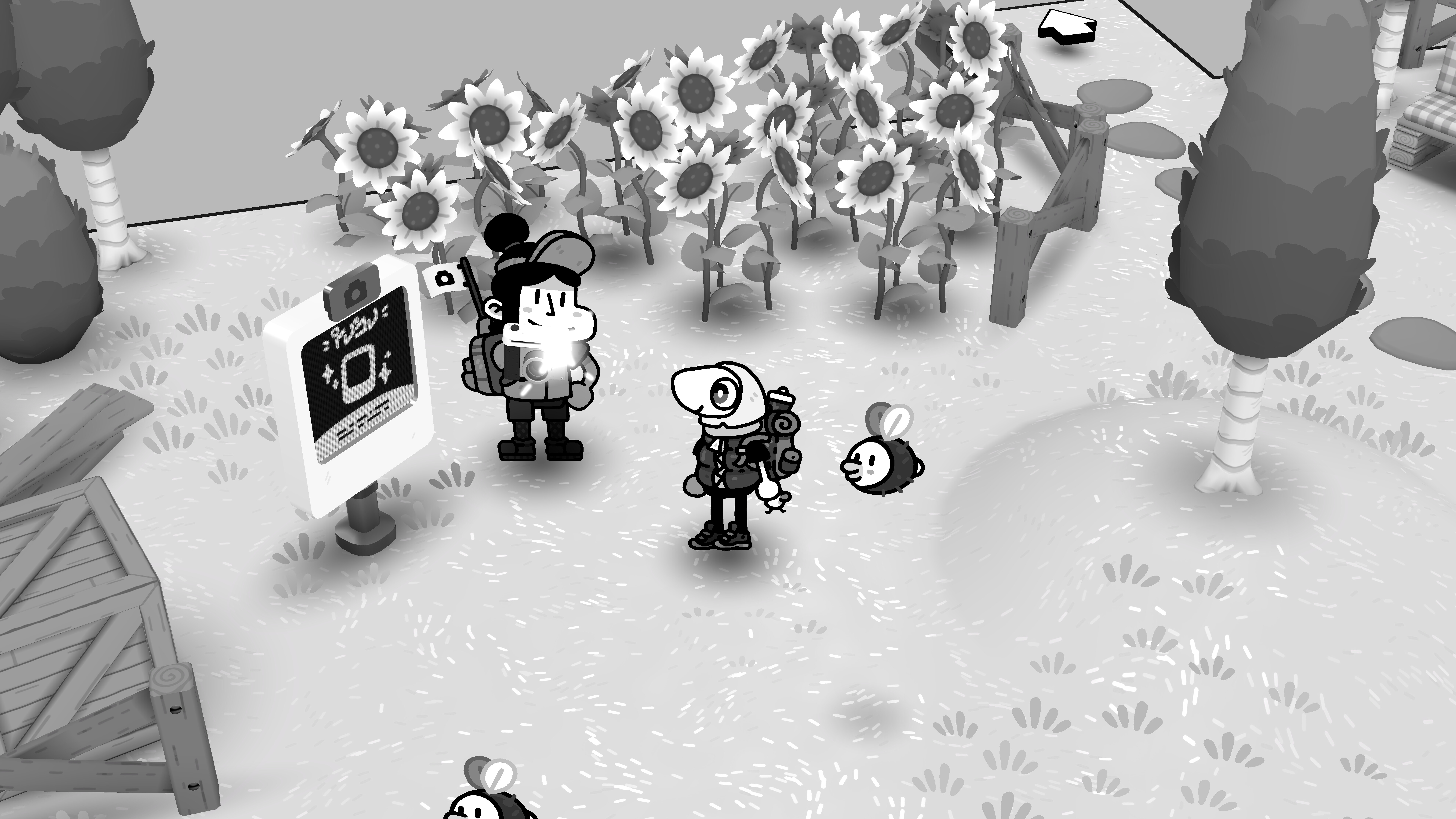How Toem 2 builds on its monochrome magic with a more confident vision
Some game developers might feel pressure to come up with something new or reinvent the wheel for every new project, but sometimes, when you have a good idea that resonates with an audience, there's no harm in just giving people more of what they want, but better. That's essentially what happened with Swedish indie developer Something We Made, creators of 2021's cosy photography adventure Toem.
According to co-founder and artist Lucas Gullbo, the team had worked on a number of prototypes following their debut game's release, but nothing had stuck. But as they also spent time returning to Toem for content updates and quality-of-life fixes, it soon became apparent that a sequel was the way to go.
"I think there was still an itch to keep making Toem stuff," he tells me. "We enjoyed the making of the game a lot, and we just settled on doing a sequel and seeing what would happen."

A sequel that aims to retains its charm
As a sequel, Toem 2 also doesn't aim to shake up the formula too much, from a decision to stick with the original protagonist who will naturally be a more confident and passionate photographer searching for Toem phenomena rather than starting over with a new protagonist altogether. It also retains its charming monochromatic art style, even though one might have assumed this would be something to change in a sequel, in a similar way to Nirvana Noir.
"Adding colour is the first thing everyone suggested," Gullbo laughs. "But [monochrome] is a part of the world, so with trying to continue the story where we're trying to explain what these sorts of Toem phenomena are, adding colour just because wouldn't make a whole lot of sense."
Making a sequel that fans would be familiar with also doesn't just mean simply rehashing the same tools as before, even though Toem 2 is also being developed in Unity.
"We started from scratch basically," he clarifies. "It's easier to start fresh and then implement all the things that you have thought about rather than try to fix everything a bit odd. We have learned a lot since the first one, and we have a bunch of our custom tools and stuff, so development is a lot faster this time."
Daily design news, reviews, how-tos and more, as picked by the editors.

Playing with perspective
There's also a notable difference from the previous game's visuals, which had the unique hook of presenting an isometric world, but which would come down to viewing the world in a first-person perspective when you get out your camera. Despite this play between perspectives, the art in Toem was all essentially 2D sprites made 3D through billboarding.
"The first game looked the way it did because I was the only artist on it, and I'm not confident in my ability to make proper 3D stuff," Gullbo admits. "So I leaned into building things out of square shapes and outlines. But we have a bigger team now, so we have the manpower to do 3D things."
Indeed, it had been in the previous game's Basto update, which included a 3D-rendered dinosaur skeleton, that served as a test for how the world would look mixing 2D and 3D together for a nice contrast, and so you can see those principles applied in a more ambitious form in Toem 2.
In presenting its isometric and first-person camera perspectives, many of the same principles apply in Toem 2, with the neat trick that when you're indoors, the first-person camera will display walls, whereas these are invisible when it is viewed from top-down.
"In the first game, we just took this camera and moved it down," says Gullbo. "But in the second one, we have two cameras, so you can see the background world when you open up your normal camera too, which looks kind of cool, and it's all in real-time."

Toem 2 has some new features
The greatest improvement in Toem 2, however, is in just the gameplay feel, which has also just been a result of the team's developed experience, in particular learning how to make the player character move around more freely, almost like a platformer, including the ability to jump.
"In the first game, the player character is sort of always grounded, so they can only walk where there is a path, which we're baking, but that meant that we couldn't do things like have a character jump from one platform to another because there has to be a connection between them," Gullbo explains. "This also started to show itself in weird places where around staircases, if the player tried to move diagonally up, they would sort of bounce back, and it was a lot of these small annoyances from our side."
While there's still more work to be done on the game, the overall feel is that every aspect of the sequel just feels like an improvement over its predecessor. "A lot of things are much faster, so we have made some of the mechanics feel snappier in a sense. It feels good to get rid of the static movement from the first game, which ended up being difficult to work with. I think that's shown that we have grown as developers."

Toem 2 will be coming in 2026, and can be wishlisted on Steam.

Alan Wen is a freelance journalist writing about video games in the form of features, interview, previews, reviews and op-eds. Work has appeared in print including Edge, Official Playstation Magazine, GamesMaster, Games TM, Wireframe, Stuff, and online including Kotaku UK, TechRadar, FANDOM, Rock Paper Shotgun, Digital Spy, The Guardian, and The Telegraph.
You must confirm your public display name before commenting
Please logout and then login again, you will then be prompted to enter your display name.
